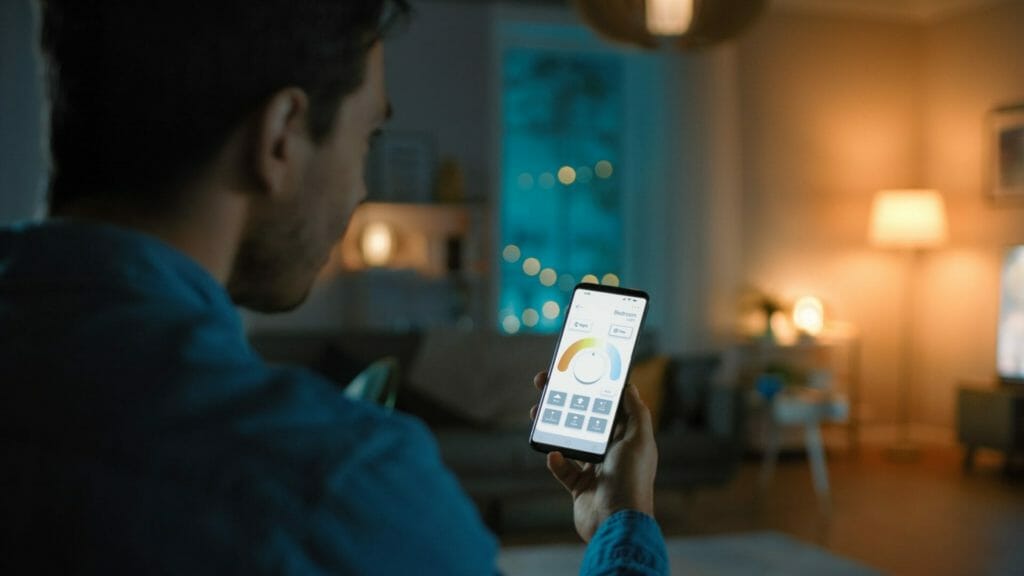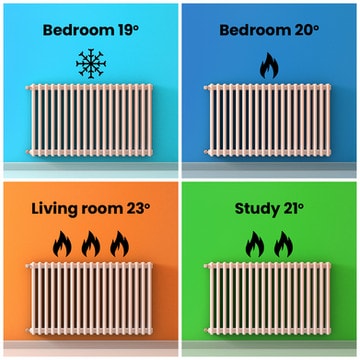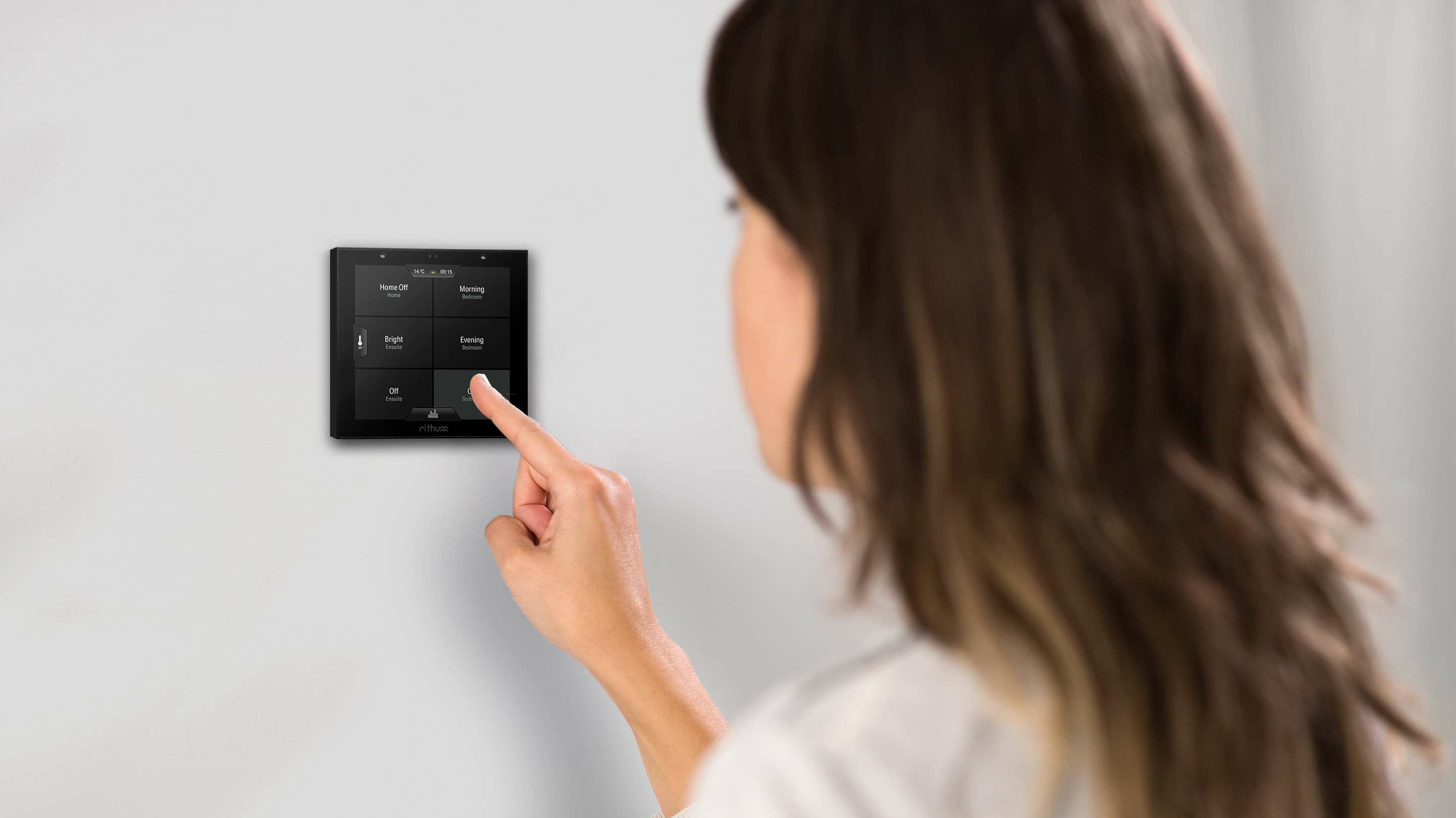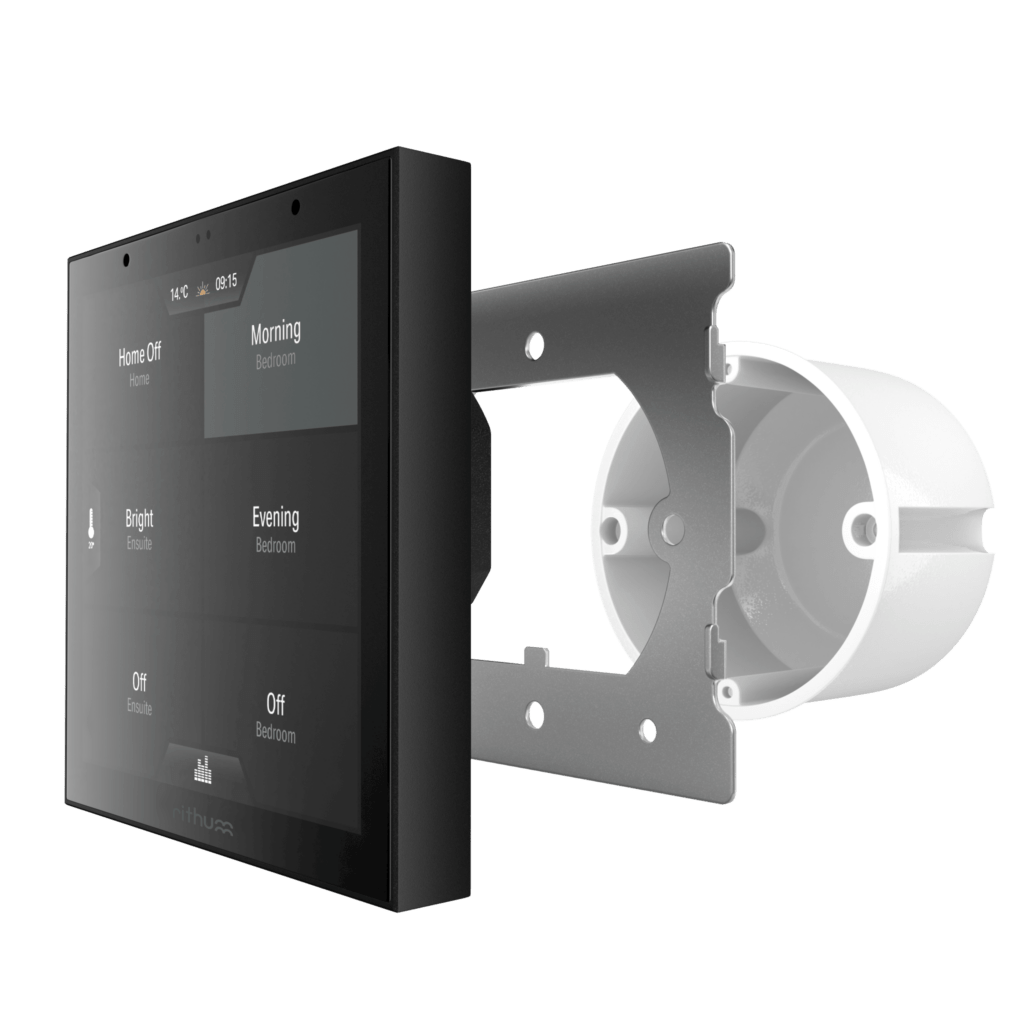Welcome to our guide on the benefits of smart homes. With the rise of smart technology, homeowners can now enjoy a more connected and convenient living experience. Smart homes offer a wide range of benefits, from energy efficiency and cost savings to added security and enhanced comfort. In this guide, we will explore the top benefits of smart homes and how they can enhance your daily living experience. Whether you’re looking to save on energy bills or make your home more secure, smart home technology can help you achieve your goals. Let’s dive in!
Broadly speaking, the benefits of smart home automation can be broken down into a few overlapping categories: Security & Safety, Energy Efficiency, Wellness & Comfort, and Convenience.
Smart Home Security & Safety
As living beings, aside from our physiological requirements such as food and water, safety & security are at the top of our hierarchy of needs and smart homes can go a long way to ensure peace of mind.
Whilst technologies such as intruder alarms and cctv cameras have been around since forever, it is the implementation of smart features into these devices and systems that provides the real benefit of Smart Home Automation. With realtime notifications alerting you to changes in state instead of an alarm simply sounding, one has the power to react in realtime and glean insights over and above whether there is simply an intruder or not.

Working together, door/window contacts and motion sensors can alert you to various states depending on the time of day. For example, knowing that the front door has opened at 4pm might tell you the kids got home ok; that they opened the door again ten minutes later might give you reason to check in remotely on the external camera; that there was motion in your dressing room says they were looking for treats and you need to hide them better (ok, so that’s not security but it’s important!).
Aside from them being opened when you’re not there, knowing that windows are open after you’ve left is also useful, maybe you need to go back or maybe that window is actually ok for the day and you’ll get it later. It’s not just windows you can be notified about, smart plugs can inform you if you’ve left home with the straighteners on and turn them off for you, averting a potentially catastrophic disaster.
All of this motion, door/window and electrical appliance monitoring can also provide a brilliant means of monitoring loved ones non-intrusively, such as a vulnerable relative. Knowing they are up and moving about and that the kettle has been turned on can really give some peace of mind.

Another trending feature is mockupancy, which is useful when you are away. Your home can simulate your presence, opening and closing motorised shades; turning lights on and off; even playing music. Any would-be intruders keeping an eye on your house are sure to think again and if they do take the next step and approach your property, you can be alerted by your intelligent CCTV cameras that have detected a presence.
Finally, securing the actual entrances to your home are video doorbells and smart locks. Video doorbells provide an easy way to answer the door whether you are home or away, adding to the mockupancy effect and deciding what action to take. Smart locks then let you unlock the door remotely (or not as the case may be) and also allow you to remotely check you’ve locked them in the first place. As a bonus, a simple means of letting in visitors such as guests, the cleaner or tradesmen (or even allowing couriers access to a safe place) can reduce disruption to your day too.
Smart Home Energy Efficiency, Comfort & Wellness
These three benefits go so hand in hand that we struggled to separate them in a way that made sense. Instead, it’s easier to think about the systems, such as lighting and heating.
Smart Home Lighting
LED lights have been around for a while and already offer huge cost savings, not only on the electricity to power them but also by not having to replace them so often. They can be even more efficient though: reducing their usage is the most effective means. One way to do this is by automatically turning them off if a room is not in use for, say, ten or twenty minutes. This can be done with the same motion sensors that provide you with notifications so you’re not doubling up on devices.

Lighting can be so much more, though, especially when combined with other smart home elements. Dimmable lights can provide different mood settings throughout the day, yes, but dimming lights in itself is nothing new. Having readily accessible scenes or recipes however, adds a level of convenience: instead of turning each light on and then adjusting the brightness to get it all just so, a simple touch of a button can activate your ‘Evening’ scene. If you get out of bed in the night, your ‘Night’ scene can illuminate the way to the bathroom just enough so you can see, without jarring you awake or disturbing others. Pretty handy. But there’s another level yet still: Human-Centric Lighting. As we discuss in our dedicated post on Human-centric Lighting & Wellbeing, the colour temperature of light throughout the day can have a huge impact on our sleep pattern and general wellbeing.

With bulbs that can change between different colour temperatures (known as controlled colour temperature, or CCT), we can mimic what our bodys expect. With quick access to these settings within scenes or by automatically providing the right colour temperature based on the time of day (even better still, off of the actual sunrise/sunset), our minds and bodies can be alert when they’re supposed to be and relax when we’re ready to wind down. There’s also an element of bio-hacking to be had here (although use with caution): got a tight deadline? Keep the light blue and stay focussed for longer.
Smart Home Heating
Heating our homes is the single biggest use of energy in the UK, so making it as efficient as possible is surely a no brainer. Smart thermostats can offer more over old-school dial thermostats, but the real savings come when Zone-based heating and Use-based heating strategies are employed.

Both are exactly as they sound: zone-based is dividing heating control into separate zones (or rooms) and use-based is only using the heating when each zone is in use. By controlling the radiators or other heaters in an individual zone independently of others, rather than just turning the whole system on or off, you can ensure that you are not heating zones unnecessarily. Furthermore, by ensuring you are only turning on those individual zones when they are actually in use, you can be more efficient still.
By combining scheduling with things like motion sensing, you can achieve this level of granularity. For example, whilst you might have your heating scheduled to be on in the evening, it could automatically turn off in the living areas once motion stops for, say, 15 minutes.
Geofencing, which is essentially tracking whether your smartphone’s GPS location crosses a pre-defined boundary (or fence), can further enhance this. Instead of scheduling your heating to turn on at 5pm ready for when you get home, it will start heating up when you cross the geofence that equates to you leaving work. That way, your flexible lifestyle doesn’t lead to heating inefficiencies.

Smart Home Convenience
One huge benefit of smart homes is the convenience they provide. Whether it’s activating a lighting scene at the touch of a button or answering the doorbell from under the duvet, saving time and hassle is high on all of our agendas. Again, geofencing can provide huge benefits, not just limited to heating. How about turning everything off automatically once you get 100m from the house? If you’ve had to leave in a hurry, you no longer need to worry about turning the TV or music off, switching all the lights or even arming the alarm…it can all happen automatically.

For more localised convenience, being able to play the radio on your sound system with the touch of a button and without locating, unlocking and finding the app on your phone as you go from room to room just feels good.
Intelligent alarm clock settings that can slightly raise the blinds; turn the lights on to nightlight and then gradually dim up; and slowly increase the radio volume, provides a very pleasant way to stir in the mornings. Additional whistles such as being notified when the post flap has been opened so you know that post has arrived, really make you smile. One huge issue with “smart homes” is the many on wall devices and smartphone apps required, but a real smart home should combine these apps and interfaces into one. A control system that combines all of the functionality into one app is much easier to manage: you know where you stand and where to go if you need to adjust or check anything.
As discussed in our other post, dedicated control points are also invaluable: a keypad is good for specific things you have pre-defined but a wall mounted touch screen really provides the flexibility to do what you need to as quickly and easily as possible without your phone and without cluttering the wall with different devices for different things. They are also perfect for visitors as their use is self-explanatory: they know where to go and within a few seconds can do whatever they need to.
Conclusion
The Benefits of Smart Homes are vast and varied, from energy efficiency to enhanced security and safety, and personalised comfort. The key is to find a smart home automation system that suits your lifestyle and needs. A professional installation may cost more, but it ensures a hassle-free setup and peace of mind. Ultimately, investing in smart home technology can enhance your quality of life and make your home a more comfortable, convenient, and connected space. Read more in our smart home beginners guide.
FAQ’s
What are 5 reasons for a smart house?
There are many compelling reasons to invest in a smart house. Here are five key benefits of smart home technology:
- Increased energy efficiency: Smart homes can help you save money on your energy bills by automatically adjusting heating, cooling, and lighting based on your usage patterns and preferences.
- Convenience: With a smart home system, you can control all of your devices from a single app, whether you’re at home or on the go. You can also set up custom routines and schedules that fit your lifestyle.
- Enhanced security: Smart home security systems can provide 24/7 monitoring, real-time alerts, and remote access to video feeds, giving you peace of mind that your home is secure.
- Improved comfort: Smart home technology allows you to customise the temperature, lighting, and other settings in your home to create a more comfortable and personalised environment.
- Future-proofing: Investing in smart home technology now can help future-proof your home, as new devices and features become available. This means that your home will stay up-to-date with the latest technology trends, and retain its value in the long term.
What is the strength of smart homes?
The strength of smart homes lies in their ability to provide convenience, comfort, security, and energy efficiency to homeowners. With the help of smart home devices and technologies, homeowners can control and automate various aspects of their homes, such as lighting, temperature, security, and entertainment systems. This allows for greater ease of use and more efficient management of the home. Additionally, smart homes can offer cost savings in the long term through energy-efficient systems, reducing bills and helping the environment.







